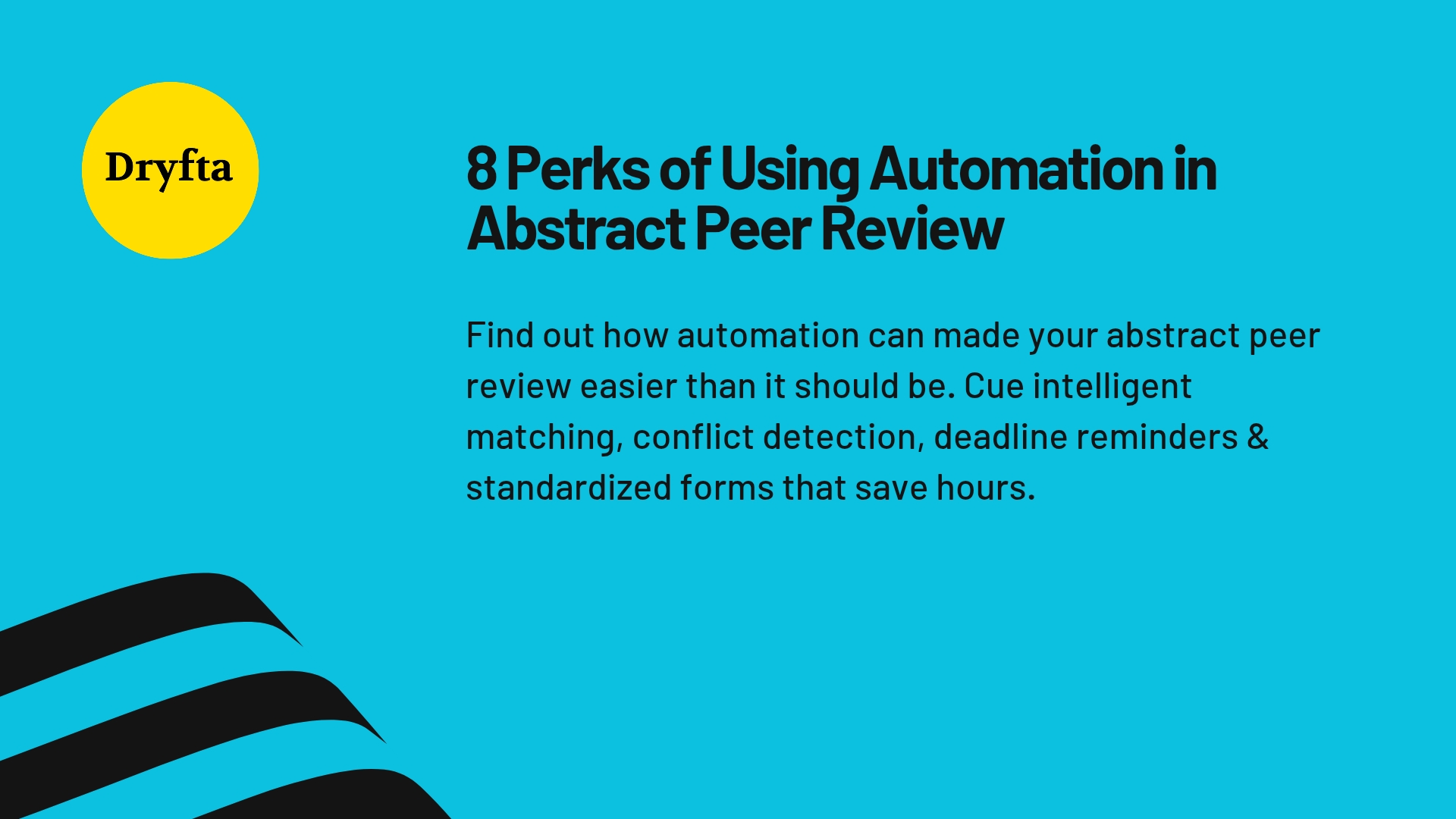
If you’re managing abstract submissions for an academic conference, you know the peer review process can feel like herding cats. Reviewers miss deadlines, authors submit incomplete materials, and you’re stuck sending reminder emails at midnight. Manual peer review management creates bottlenecks that delay your entire conference timeline.
The world of conference management, after having adopted virtual and hybrid events, has now begun to embrace automation as a necessity. The systems have also proven that quality peer review doesn’t require sacrificing your evenings and weekends to manual coordination. Here are 8 ways in which you can simplify the process further, powered by automated abstract management software:
1. Let the System Match Reviewers to Submissions Based on Expertise
Automated systems let reviewers specify their areas of expertise during registration using keyword tags or subject categories. When abstracts arrive, the system suggests reviewers whose expertise matches the submission topic. Review these suggestions and make final decisions in minutes rather than hours.
2. Catch Conflicts of Interest Before They Become Problems
Automated systems flag potential conflicts before you even assign reviews. The platform compares author and reviewer institutional affiliations automatically and can detect previous collaborations if you’ve imported historical data.
When a potential conflict appears, the system alerts you so you can assign a different reviewer. This automation catches conflicts you might miss when you’re tired or rushing to meet deadlines.
3. Stop Chasing Reviewers with Automated Deadline Reminders
Automated reminder systems send scheduled notifications without you having to lift a finger. Reviewers then receive a series of notifications and at a frequency determined by you. An initial assignment confirmation, reminders at intervals you specify, like one week before the deadline, 3 days before, and on the deadline day itself. For reviewers who still have not turned in their work, the system then sends escalating reminders and nudges you to intervene personally.
4. Use Standardized Forms So Every Review Follows the Same Criteria
Automated systems present every reviewer with identical evaluation forms that break down your criteria into specific questions with defined rating scales. Create custom review forms for different submission tracks so technical papers get evaluated on different criteria than case studies. This standardization means you can actually compare reviewer scores meaningfully across submissions instead of trying to reconcile completely different evaluation approaches.
5. Maintain Blind Review Integrity Without Manual File Editing
Automated systems handle blind review anonymization with little to no manual intervention. When authors submit abstracts, the system automatically removes all identifying personal information before sending the submissions to reviewers. A Double-blind review process works the same way, with both author and reviewer identities hidden. The system maintains these privacy boundaries throughout the process and only reveals identities after you make final decisions.
6. Track Progress Across Your Entire Review Process in Real Time
Automated dashboards show real-time progress across your entire review process without manual data entry. See at a glance how many reviews are complete, pending, or overdue. Filter views by submission track, reviewer, or deadline to focus on specific areas needing attention. Generate reports instantly for stakeholder meetings showing completion rates or average scores by category. This visibility helps you intervene early when reviews are falling behind schedule.
7. Send Personalized Messages to Dozens of Reviewers Simultaneously
Automated communication templates let you send personalized messages at scale. Create templates for assignment notifications, reminder emails, thank you messages, and deadline extensions that automatically populate with reviewer names, submission titles, and relevant dates. The system still allows you to send individual messages when needed, but automation handles routine communications while maintaining a personal tone through smart variable insertion.
8. Notify Authors and Manage Their Responses Without Manual Tracking
Automated decision workflows handle post-review author communications based on your acceptance, rejection, or revision decisions. Authors receive appropriate messages with relevant next steps included automatically. For revisions, the system tracks resubmission deadlines and can route revised abstracts to the same reviewers for consistency. This automation ensures that no author falls through the cracks.
Automation for Efficiency
Conference organizers now face the challenge of growing abstract submission volumes, the pressure to maintain review quality, and the reality of limited staff time and budgets. These are the daily realities of modern conference management in academic and professional settings.
The professionals who adopted these systems early carried the burden of proving their value to skeptical colleagues. And today, that burden feels a little lighter as more organizations recognize that automation serves quality rather than undermining it.
Automated Peer Review: Brought to You By Dryfta
Dryfta’s abstract management platform eliminates the administrative burden that’s holding your conference back. Our system handles intelligent reviewer matching, automated conflict detection, deadline reminders, standardized evaluation forms, and blind review management within a single integrated platform. You maintain complete control over decisions as the system manages the coordination work that currently fills your task list. Visit dryfta.com or contact our team today. Your next abstract submission deadline is coming faster than you think!




